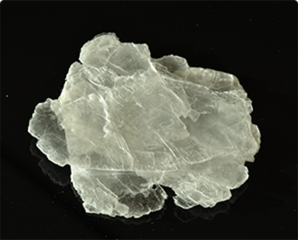Jan . 20, 2025 15:55
Back to list
HS10 Synthetic Mica
Synthetic fluorphlogopite and natural mica are two materials that shimmer with allure in various industries, especially in cosmetics and beauty. Despite their similar applications in giving products a pearlescent finish, they possess distinct properties that cater to different consumer needs and industry standards. Understanding these differences can aid consumers in making informed decisions, as well as guide manufacturers in selecting the appropriate ingredient for their products.
The sourcing of natural mica also intersects with significant ethical considerations. Reports of child labor and unsafe working conditions in some areas where mica is mined prompt a call for transparency and ethically responsible sourcing. Companies committed to ethical practices often seek suppliers that adhere to fair trade principles, thereby ensuring that their products support sustainable community development. In terms of trustworthiness, consumers might lean towards synthetic fluorphlogopite due to its reputation for purity and consistency. However, a growing segment of the market places value on natural ingredients, which can boost consumer trust when the source is verified to be ethical and sustainable. Brands must navigate these complex consumer expectations by balancing ingredient efficacy with ethical sourcing narratives. The choice between synthetic fluorphlogopite and mica extends beyond mere ingredient selection; it is an intersection of performance, ethics, and consumer perception. For the discerning consumer or manufacturer, understanding the nuances of these materials offers an opportunity to align product offerings with evolving market trends and consumer demands. In conclusion, both synthetic fluorphlogopite and natural mica possess unique attributes that can enhance the sensory and visual appeal of cosmetic products. The decision between them must consider factors such as safety, ethical sourcing, product performance, and brand values. Companies can enhance their competitive edge by transparently communicating these considerations, thereby building trust and loyalty with consumers who are increasingly informed and conscious about their purchasing choices.


The sourcing of natural mica also intersects with significant ethical considerations. Reports of child labor and unsafe working conditions in some areas where mica is mined prompt a call for transparency and ethically responsible sourcing. Companies committed to ethical practices often seek suppliers that adhere to fair trade principles, thereby ensuring that their products support sustainable community development. In terms of trustworthiness, consumers might lean towards synthetic fluorphlogopite due to its reputation for purity and consistency. However, a growing segment of the market places value on natural ingredients, which can boost consumer trust when the source is verified to be ethical and sustainable. Brands must navigate these complex consumer expectations by balancing ingredient efficacy with ethical sourcing narratives. The choice between synthetic fluorphlogopite and mica extends beyond mere ingredient selection; it is an intersection of performance, ethics, and consumer perception. For the discerning consumer or manufacturer, understanding the nuances of these materials offers an opportunity to align product offerings with evolving market trends and consumer demands. In conclusion, both synthetic fluorphlogopite and natural mica possess unique attributes that can enhance the sensory and visual appeal of cosmetic products. The decision between them must consider factors such as safety, ethical sourcing, product performance, and brand values. Companies can enhance their competitive edge by transparently communicating these considerations, thereby building trust and loyalty with consumers who are increasingly informed and conscious about their purchasing choices.
Prev:
Next:
Latest news
-
Paint with Mica and Heat Reflective PropertiesNewsApr.16,2025
-
Enhancing Interior Walls with Thermal Paint and Mica PigmentNewsApr.16,2025
-
Mica Powder Paint: The Perfect Solution for Waterproofing and DurabilityNewsApr.16,2025
-
Mica Powder for Paint: A Unique Aesthetic and Protective SolutionNewsApr.16,2025
-
Mica Paint Powder: Enhancing Automotive and Industrial CoatingsNewsApr.16,2025
-
Allure of Mica Pigment Paint: Unlocking Shimmer and Color RangeNewsApr.16,2025
Products categories








